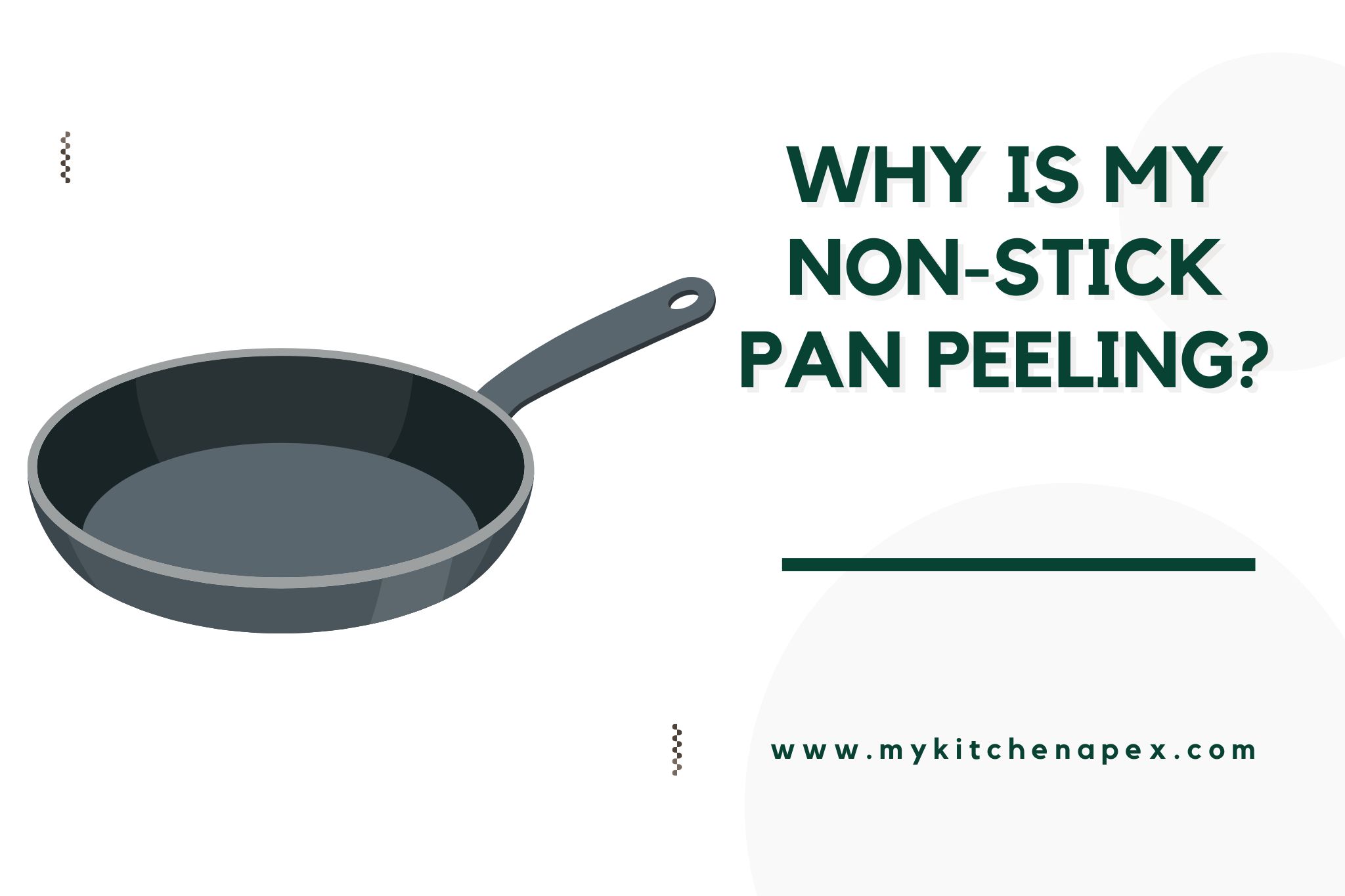Originally Created on: March 4, 2024 @ 5:35 am
Are you baffled by the sight of your once pristine non-stick pan now peeling and flaking? It can be frustrating to see your favorite kitchen tool losing its effectiveness over time.
Non-stick pans are a popular choice in the kitchen, but many users are often left wondering why the non-stick coating starts to peel. Understanding the causes behind this common issue can help you prolong the lifespan of your non-stick cookware and keep it in top condition for longer.
Let’s dive into the reasons behind the peeling and explore ways to prevent it from happening in the future.
Table of Content
Highlights:
- Causes include overheating and using metal utensils
- Prevention involves proper temperature and utensil use
- Peeling can release harmful chemicals and should be addressed promptly
Why is my non-stick pan peeling?
Non-stick pans can start peeling due to overheating, using metal utensils, or simply from regular wear and tear. Overheating can cause the non-stick coating to break down, leading to peeling. Using metal utensils can scratch the surface and cause the non-stick coating to peel off over time.
To prevent peeling, it’s important to use non-stick pans at the appropriate temperature and avoid using metal utensils. Additionally, following the manufacturer’s care instructions, such as avoiding abrasive cleaners, can help prolong the life of the non-stick coating.
If your non-stick pan is already peeling, it may be time to replace it with a new one to ensure food safety and optimal cooking results.
You May Also Like: are anodized cookware safe
How do you fix a peeling non stick pan?
To fix a peeling non-stick pan, start by thoroughly cleaning the pan with warm soapy water and a soft sponge to remove any loose pieces of coating. Next, use a scrub pad or sandpaper to gently remove any remaining loose coating on the pan’s surface, being careful not to scratch the pan. Once the pan is clean and smooth, re-season it by applying a thin layer of cooking oil to the surface and heating it in the oven at a low temperature for an hour to create a new non-stick coating.
Additionally, avoid using metal utensils or abrasive cleaning tools on the pan to prevent further peeling. It’s important to regularly inspect the pan for any signs of peeling and address the issue promptly to maintain its non-stick properties.
By following these steps, you can effectively fix a peeling non-stick pan and restore its functionality for continued use in your kitchen.
Is it safe to use nonstick pans that are peeling?
It is not safe to use nonstick pans that are peeling because the peeling coating can get into your food and potentially be ingested. The peeling can also expose the metal underneath, which can leach into your food and potentially cause health issues.
It is important to replace nonstick pans if they are peeling to ensure the safety of your cooking and your health.
Peeling nonstick pans can also release toxic fumes when heated, which can be harmful to your respiratory system. Additionally, the peeling can affect the performance of the pan, leading to uneven cooking and potentially ruining your food.
To ensure the safety and effectiveness of your cookware, it is best to replace nonstick pans that are peeling.
Also Read: are all pans non stick
What to do when non stick pan coating comes off?
When the non-stick pan coating starts to come off, it’s important to stop using the pan immediately to prevent any non-stick coating particles from getting into your food.
One option is to try re-seasoning the pan by using a thin layer of oil to create a new non-stick surface, but this may not always be effective. Another option is to consider replacing the pan with a new one, especially if the coating is extensively damaged.
If you decide to re-season the pan, start by washing and drying it thoroughly. Then, apply a thin layer of oil to the surface and place it in the oven at a high temperature for an hour.
However, it’s important to keep in mind that this method may not always fully restore the non-stick properties of the pan. If the damage is extensive or the pan is old, it may be best to invest in a new non-stick pan for better cooking experiences.
When should you throw away nonstick pans?
Nonstick pans should be replaced when they start to show signs of wear and tear, such as scratches, peeling, or flaking. These issues can compromise the nonstick coating, making the pans less effective and potentially releasing harmful chemicals into your food.
Additionally, if the nonstick surface becomes discolored or warped, it’s a good indicator that the pan should be replaced to ensure safe and efficient cooking.
It’s important to regularly inspect your nonstick pans for any damage or deterioration, and replace them as needed to maintain a safe cooking environment.
Over time, the nonstick coating on these pans can wear down, leading to reduced effectiveness and potential health risks.
By being proactive about replacing nonstick pans when necessary, you can ensure that your cooking equipment remains in good condition and that your meals are prepared safely.
Also Read: why do saucepans have glass lids
Final Thoughts
Non-stick pans can start peeling due to overheating, using metal utensils, or regular wear and tear. To prevent peeling, use non-stick pans at the appropriate temperature, avoid using metal utensils, and follow the manufacturer’s care instructions. If the pan is already peeling, replace it to ensure food safety.
Attempting to re-season the pan may not always restore its non-stick properties. Peeling non-stick pans should be replaced to prevent non-stick coating particles from getting into your food and potentially releasing harmful chemicals. Regularly inspect non-stick pans for wear and tear, and replace them as needed to maintain a safe cooking environment and ensure efficient cooking.

